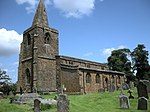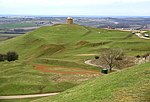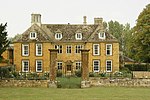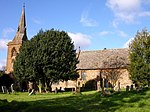St John the Baptist's Church, Avon Dassett
19th-century Church of England church buildingsChurch of England church buildings in WarwickshireChurches completed in 1868Churches preserved by the Churches Conservation TrustGothic Revival architecture in Warwickshire ... and 2 more
Gothic Revival church buildings in EnglandGrade II* listed churches in Warwickshire

St John the Baptist's Church is a redundant Anglican church in the village of Avon Dassett, Warwickshire, England. It is recorded in the National Heritage List for England as a designated Grade II* listed building, and is under the care of The Churches Conservation Trust.
Excerpt from the Wikipedia article St John the Baptist's Church, Avon Dassett (License: CC BY-SA 3.0, Authors, Images).St John the Baptist's Church, Avon Dassett
Park Close, Stratford-on-Avon
Geographical coordinates (GPS) Address Nearby Places Show on map
Geographical coordinates (GPS)
| Latitude | Longitude |
|---|---|
| N 52.1465 ° | E -1.4019 ° |
Address
St Joseph
Park Close
CV47 2AP Stratford-on-Avon
England, United Kingdom
Open on Google Maps






